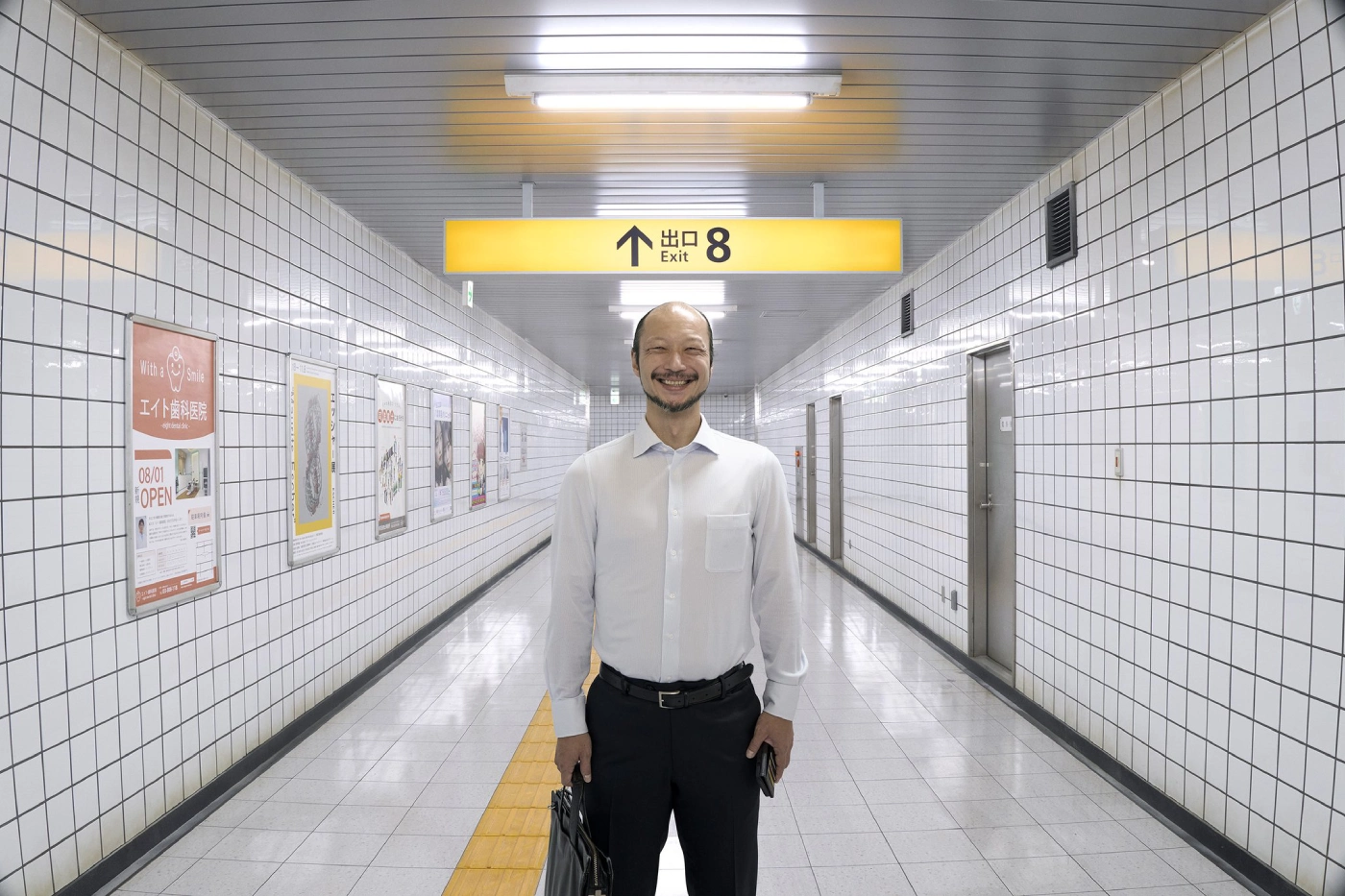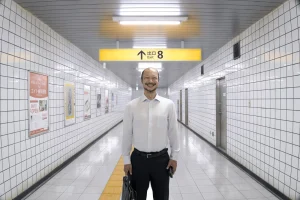An empty metro station passageway becomes a claustrophobic MC Escher maze in Exit 8, which premiered at the Cannes Film Festival earlier this year and is now playing in Prague cinemas courtesy the Be2Can festival. This diverting feature based on the Kotake Create video game might be the first film to be entirely trapped in a Backrooms-like liminal horror setting (ahead of next year’s The Backrooms, an official adaptation of the popular YouTube series), and it’s certainly evocative—even if it never really allows the audience in on the game alongside its characters.
Directed by Genki Kawamura (A Hundred Flowers) Exit 8 opens in a metro car as its unnamed protagonist (played by Kazunari Ninomiya) witnesses a mother and her infant child being verbally assaulted over the baby’s cries. Instead of intervening, however, he turns up the volume on his earbuds, which just happen to be pumping out Ravel’s Boléro.
As our protagonist exits the metro at his station, he gets a call from his (ex-?) girlfriend, who informs him that she’s pregnant and headed to the hospital. But the phone call cuts in and out as he heads up stairs and through corridors, and soon gets dropped completely. And as he walks down the same brightly lit corridor for the third time, and past the same businessman with a briefcase, he realizes he’s walking in some kind of unending circle—and has become The Lost Man.
These striking, fluorescent-lit corridors of Exit 8 will become the film’s central motif, as The Lost Man and other characters walk them endlessly for 90 percent of the movie. There’s a single long hallway, brightly lit with a sign pointing towards the titular exit. This is followed by a left turn leading to a shorter, darker passageway with some lockers, a right turn leading to a similar room with a sign on the wall, and then another left leading to… the same long hallway where we started.
The logistics seem to work: this isn’t a loop, and that third turn should have led to somewhere different. But here we are back at the starting point. And now, as we walk past the businessman for the fourth time, we hear his footsteps stop. He’s standing right behind us, peering over our shoulder with a perverted ear-to-ear grin. We run away… only to end up back in the same place we started.
For the entirety of Exit 8, we’re trapped in this endless maze alongside the characters; some scenes are shot from the first-person perspective, and almost all shots are composed of single minutes-long takes. This helps recreate the feel of the original game, but also does such a great job of transporting us to the location that we begin to have a genuine feel for these increasingly-unsettling surroundings.
Exit 8 is rarely overtly scary—save for one moment involving rats that should not be spoiled—but Kawamura does a terrific job of using repetition and familiarity to get under our skin. The more we walk down these stark, empty hallways, the more we want to find our way out of them. Even if there are no immediate threats here, the feeling of claustrophobia that slowly builds over the course of the film is palpable.
There’s hope in finding the way out in that sign posted in the hallway before the main corridor. It gives a series of instructions that The Lost Man is quick to pick up on. Look out for any anomalies. If you see an anomaly, turn around. Keep walking until you get to Exit 8.
What are the anomalies? The one missed opportunity in Exit 8 is that it doesn’t really allow the audience to play the game alongside its protagonists. The Lost Man—and later, The Walking Man (Yamato Kôchi), and a young child—identify every poster on the wall, and count every locker in search of the one thing that has changed since their last walkthrough. We begin to do the same. But almost every anomaly overtly announces itself in a way that rarely rewards paying close attention.
Liminal spaces filled by the subconscious horrors of our minds make for a wonderful setting for psychological horror, and despite its minimalist setting and deliberate pacing, Exit 8 lingers long after the lights come up. Kawamura’s unsettling restraint turns this simple loop into a meditation on guilt, avoidance, and the inescapable patterns we build for ourselves. It’s a film that invites us to look closer at what changes and what doesn’t—because sometimes, the only real exit is noticing what’s different this time around.













